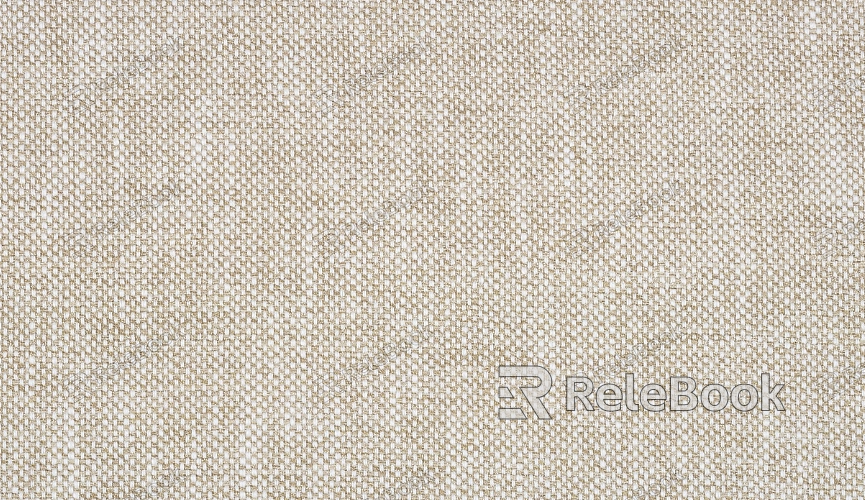How to Make Cloth Texture in Paint 3D
Realistic cloth textures can significantly enhance the visual quality of 3D models, especially in character modeling and interior scene design. Whether for clothing, curtains, or furniture, achieving a fabric look that feels authentic adds to the immersive quality of a scene and boosts its artistic impact. Here, we’ll walk through the steps and techniques for creating fabric textures in Paint 3D, helping designers achieve compelling results.

Gather Fabric References and Choose Suitable Colors Start by collecting high-quality fabric references (such as linen, silk, or burlap) to observe the unique textures. These references help you understand fabric details, like weave patterns or sheen. Select a base color in Paint 3D that matches the fabric type you’re aiming for, like light beige for linen or bright white for silk. This choice will give your texture a more authentic look. Use the “Color Picker” tool to fine-tune the color, ensuring it closely resembles the real fabric’s tone.
Create a Basic Layer for Texture Depth Use Paint 3D’s brush tools to mimic the foundational fabric texture. For fabrics like linen or burlap, which have a subtle grainy quality, use a soft brush to create gentle, uneven strokes that suggest texture. Adjust the brush opacity to layer colors slightly, adding depth and a natural feel to the base texture. Save this base texture layer for easy adjustments and future layering.
Add Highlights and Shadows for Fabric Folds Fabrics often have folds and shadow variations that add to their realism. To create this, use darker colors to mark shadowed areas and lighter colors to highlight where light naturally hits. For fabrics with more folds, like silk, use a soft brush to add highlights, simulating the reflective qualities that emphasize folds. Gradually blend shadows into highlighted areas with gradient tools to create smooth transitions and give the fabric a lifelike appearance.
Enhance Texture with Noise Effects Fabrics typically have fine particles or graininess, which you can create with Paint 3D’s spray brush tool. Lightly spray this across the texture to add a subtle fabric feel. Control the spray intensity to keep it natural; add more noise in shadowed areas and along folds for a realistic fabric surface. Experiment with different shades for the grain effect, giving the texture a richer look while maintaining the depth.
Overlay Patterns for More Texture Variety Add patterns like floral, plaid, or striped designs using Paint 3D’s “Stickers” tool to overlay these elements onto the base fabric texture. Adjust pattern transparency to blend naturally with the fabric base, avoiding overly stark contrasts. Position the pattern carefully, considering the folds and highlights of the fabric to maintain visual balance and realism.

Use the Smooth Tool for Seamless Blending In areas with folds or edges, apply Paint 3D’s smooth tool to soften harsh lines and make the texture more cohesive. Smooth out areas where highlights and shadows meet to eliminate sharp transitions, creating a soft light-to-shadow effect. For softer fabrics like silk, use stronger blending, whereas coarse fabrics like burlap can retain more defined edges for authenticity.
Adjust Material Settings for Realism Paint 3D offers several material options that can enhance your fabric texture. Using a “Matte” material can create a soft, natural look for fabrics, while “Glossy” works better for shiny, reflective materials like silk. Adjust the gloss and reflection settings to control how light interacts with the fabric, making it look realistic under different lighting conditions. Test different lighting angles to ensure the fabric looks natural and captures light realistically.
Preview and Fine-Tune the Texture After completing the texture, use Paint 3D’s preview feature to inspect it from various angles, checking for consistency in the shadows, highlights, and grain effects. Make adjustments to folds, highlights, and shadows as needed to ensure the fabric texture feels authentic from different perspectives. Save the final texture file, which will make it easier to reuse in future projects, saving time while maintaining quality.
Creating realistic fabric textures in Paint 3D involves layering colors, shadows, highlights, and noise to achieve a detailed and three-dimensional look. For top-notch 3D textures, SketchUp models, or 3ds Max assets, explore Relebook’s extensive resources, helping you elevate your projects with stunning visuals.

